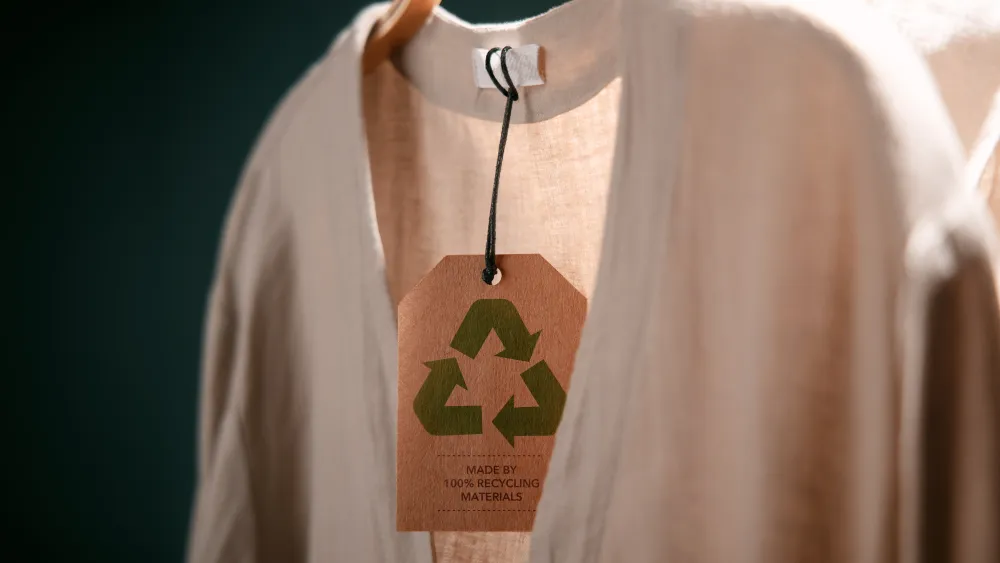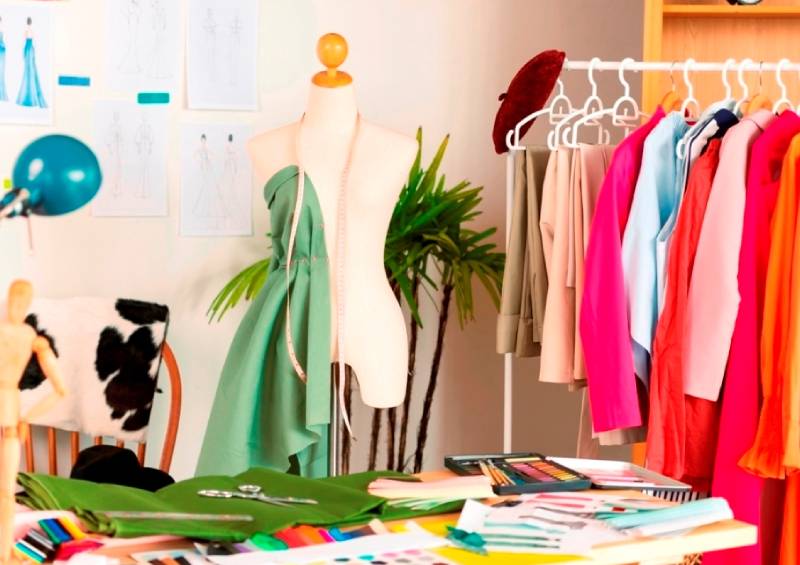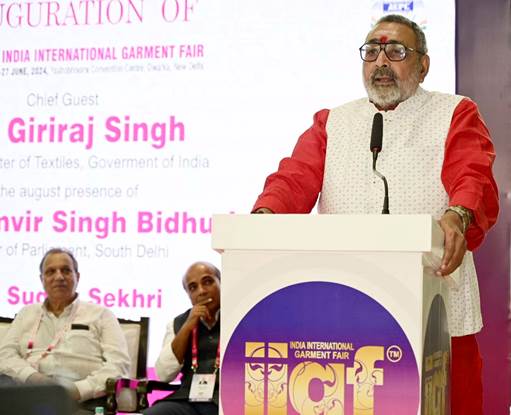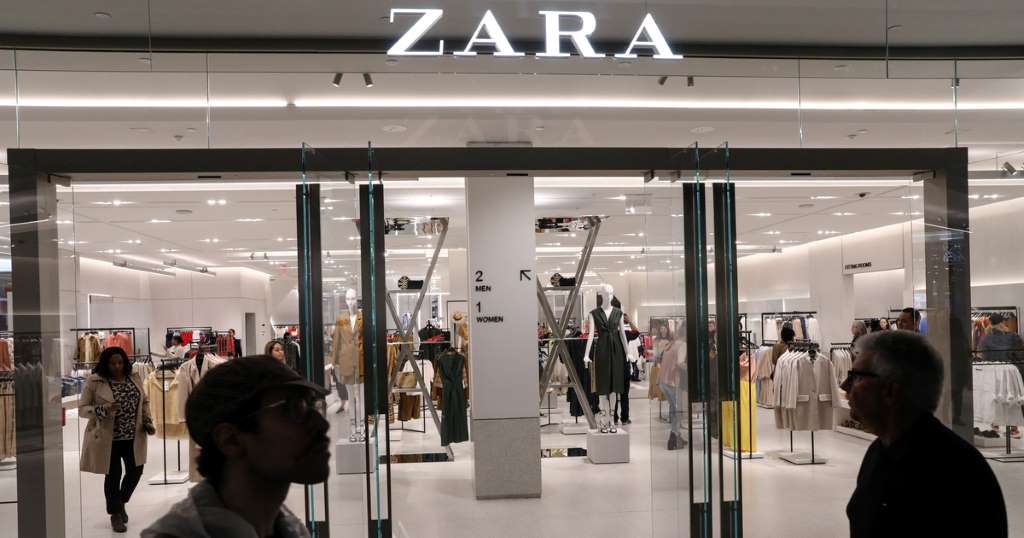FW
Made in France 2014 to be held from April 9 to 10 in Paris is devoted to high-end apparel and accessories manufacturing. The event would be showcasing French high-end manufacturing expertise, skills, craftsmanship and industrial techniques. The 12th edition of Made in France will bring together a handpicked selection of around 100 specialist companies from garment manufacturers to weavers, including those awarded with the French government’s Entreprises du Patrimoine Vivant (‘Living Heritage Company’) quality label for luxury ready-to-wear and accessories.
The exhibition is a platform for fashion designers and heads of collections on the lookout for textiles and fabrics, manufacturing solutions and related services for high-end and luxury apparel and fashion accessories. Organised for the first time under the PV Manufacturing umbrella, following Première Vision’s acquisition of the show last September, the exhibition this year boasts of 99 exhibitors (up 8 per cent on April 2013) and an exhibition area that is almost 15 per cent bigger compared to last year.
The event would have exhibitors showcasing new valuable, sought-after expertise including trimmings as well as horn, bone, wood, metal and ribbon craftsmanship, and unique craftsmen like sculptors, engravers, bead- makers, jewellers and finishers. The area is also expanded to include a bigger leathers section. Talents, services and expertise from France’s regions like embroidery from Cambrésis, manufacturing solutions from the Loire, silk-screen printing from Champagne-Ardennes, finishing techniques and silks from the Rhône-Alpes region would be available during the event.
Made in France turns the spotlight on specialist skills, expertise and industrial techniques which help turn designers’ vision into reality. Several seminars and talks are organised like a two-part talk addressing current industry issues.
The United Kingdom will launch three projects in Bangladesh to help improve working conditions and safety standards for readymade garment units. One project is aimed at helping all levels of staff, factory owners, management, supervisors and workers to work together to improve working environment and productivity, address issues such as fire safety, absenteeism, working hours, take-home pay and efficiency.
The second project would provide training for middle management to improve knowledge and understanding of labor and safety standards, and how to apply these in their garment factories. The third would focus on improved healthcare and training nurses who work in factory clinics to increase the range of services they provide and provide advice to workers. The aim is to enhance the competitiveness of garment factories as a healthier workforce helps factory performance.
The British funding is worth £1.8 million pounds. Factory collapses and fires have put the spotlight on working conditions in the country’s garment industry. Bangladesh’s garment sector remains vital to poverty reduction. It is worth over £13 billion, and provides over four million jobs for people, 70 to 80 per cent of whom are women. The garment industry supports a further 25 million people.
Intertextile Shanghai Apparel Fabrics-Spring Edition 2014 which took place from March 3 to 5 saw a huge increase in the number of overseas and Chinese buyers. Over 40,000 visitors were reported, a 60 per cent increase compared to the 2013 edition which was held in Beijing. The fair spread over 50,000 sq. mtr and three halls of the Shanghai World Expo Exhibition and Convention Center. Visitors came from 91 countries and the top five overseas buyer countries, excluding Mainland China, were Korea, Hong Kong, Japan, India and the US.
Exhibitors felt that the move to Shanghai was good for business since many trading companies and end-buyers have offices in Shanghai and so do many European and American textile brands. Overseas buyers were also pleased with the added convenience of textile factories in Shanghai and surrounding areas.
Domestic exhibitors say the quality of domestic exhibitors in Shanghai is better because most of them are focused on exports to Europe, the US and Japan. With mixed economic news coming out of China over the last year, exhibitors were pleased to discover that Chinese customers continue to appreciate quality and fashionable products, for which there is increasing demand.
Next year’s spring edition will be held from March 18 to 20, 2015, at a new venue in Shanghai, while the autumn edition will be held from October 20 to 23, 2014, also in Shanghai.
https://www.messefrankfurt.com/.../intertextile-shanghai-apparel-fabrics-
The Global Organic Cotton Community has called for an Organic Cotton World Day. It feels the benefits of organic cotton should be better communicated to consumers, as consumers still do not know about the chemicals used in cotton production and do not make the link between organic food and organic cotton.
One suggestion is, consumer habits should be driven by clothing companies and this can be done by re-engineering the value chains and product offerings. Some brands now produce their collection exclusively with organic cotton, thus making their consumers buy organic and opening the idea of organic to them.
The Global Organic Cotton Community platform was created for members of the global organic cotton community to share conversations, knowledge and information about organic and fair trade cotton.
In 2008, Helvetas (the Swiss Association for International Cooperation) and ICCO (Dutch Interchurch Organisation for Development Co-operation) intensified their collaboration in the area of organic and fair trade cotton. They felt the need to have additional tools and processes to exchange views, opinions and experiences, both among themselves and with other people working in the organic cotton sector. So they decided to establish and run a web platform. The web platform went live in June 2009.
www.organiccotton.org/
Global fashion giants routinely source cellulosic fibers including rayon and viscose from endangered forest regions. Environmental organization, Canopy is working to create awareness about this problem. It aims to tackle supply chain transparency in sourcing fibers. Canopy has shown how fibers from threatened forests are routinely being used in rayon, viscose and modal fibers. These fibers are used in suit linings, dresses, skirts and T-shirts. It warns that the dissolving pulp or viscose industry is poised for continued ambitious expansion and poses an increasing risk to threatened forest ecosystems around the world. It feels, commitments by brands will help curtail the problem and build solutions.
Companies like H&M are supporting this initiative. H&M wants to play a strong role in ensuring a future for the planet’s ancient and endangered forests. It is committed to exploring its supply chain and doing its utmost to avoid these fabrics within the next three years. It is taking additional steps of encouraging leaders throughout the supply chain to support conservation in endangered forests and use alternative inputs, for example, recycled clothing.
The Japanese market is facing a shortage of jacquard fabric for summer 2014 and also possibly for winter 2014. Japanese companies wanting to use jacquard fabric to produce garments have to start production planning as soon as possible.
Most Japanese apparel companies have taken to the jacquard fabric in a big way as it has a strong fashion element. Patterns range from dobby to the more complex variety. The design is superior to the ordinary woven or knitted fabrics. Large flower-shaped jacquard fabrics, Matt Lacey embossed fabrics are received well by the market. In terms of design, patterns with a three-dimensional effect have also become popular. Wool blends have come into jacquard.
Jacquard production is time consuming. The preparation process involves various types of materials. The overall production capacity of major jacquard producers has declined substantially. Jacquard fabrics have a high requirement of yarn dyeing and yarn dyed process. Only certain machines can produce printed jacquard fabric. Since the spring series of clothing uses more cotton, linen, silk and synthetic fibers and thin high-density material, fabrics of the specified concavity, luster and elasticity is also required.
The government of Bangladesh has decided to form a council to deal with various problems in the readymade garment sector. The Alternative Dispute Resolution (ADR) council will be formed by this month. Victims of accidents in the readymade garment sector will be able to file their complaints with this council. The council will reach decisions upon hearing from both sides.
Bangladesh has made progress in Generalised System of Preferences and the US seems to be satisfied with the initiatives. For instance, 200 inspectors have to be appointed in the apparel sector and 68 inspectors have already been appointed. A publicly accessible garment workers' database has now gone online.
The US had expressed concern over labor unrest in the readymade garment sector. But Bangladesh says that now the situation is totally normal and calm and hopes to sign the preferential trade agreement and free trade agreement with different countries in the days to come. The Bangladesh Labor Act may be extended to export processing zones.
Bangladesh hopes for a surge in trade and investment relations with the US. A Trade and Investment Cooperation Forum Agreement (TICFA) meeting, the first of its kind, is scheduled to be held later this month.
China will invest more than a billion dollars to boost the textile industry in the country's largest cotton producing region, the Xinjiang Uyghur region, in western China. The investment will be used to attract garment manufacturers from other provinces, build infrastructure, and to subsidise existing local textile companies by lowering taxes and subsidising logistics costs.
Ürümqi, Xinjiang's capital, has been earmarked for development as the regional textile and apparel trading centre, while Aksu, Shihezi and Korla have been designated as three textile industrial cities. The investment is expected to add a million jobs in Xinjiang and help the region export apparel and textile products to Europe, Central Asia, Western Asia and South Asia.
Xinjiang is one of the poorest regions in China and has been subject to recent political instability. It’s the largest of China’s regions and provinces. Xinjiang is a vast region in western China, torn by tensions between the Muslim Uighurs, who number about 10 million, over 40 per cent of Xinjiang's total population and the majority Han Chinese, leading to periodic violence.
Meanwhile, large textile industrial parks will be located in seven cities in the counties if Hami city, Bachu county, Alar city, Xayar county, Manas county, Kuytun city and Khorgas town.
Leading Japanese flat knitting machine builder Shima Seiki has added a new SWG-N2 series to its compact class of wholegarment flat knitting machines. The SWG-N2 series features Shima’s proven R2CARRIAGE system for higher productivity and a larger number of yarn carriers and holding hooks for yarn cutting, as well as a separate yarn holder with increased capacity, which allows for even more flexibility in multi-color knitting.
The R2 (Rapid Response) system features an advanced carriage mechanism combined with improved software programming that achieves quicker carriage returns after each course. Featuring the company’s renowned SlideNeedle on a 10, 16, 24 and 36 inch wide needle bed respectively, the SWG021N2, SWG041N2, SWG061N2 and SWG091N2 are capable of producing a range of fashion accessories from gloves, socks, hats, mufflers, neck-ties and other small items, as well as children’s wear and even leggings and tank tops, all in their entirety, with no sewing or linking required. As a result, the usable range of a given yarn can be expanded to include coordinated items from head to toe for all ages.
In addition to their established reputation in the fashion industry, SWG021N2, SWG041N2, SWG061N2 and SWG091N2 are also capable machines for technical textiles, such as industrial material, sports, medicine and safety.
www.shimaseiki.com/
Bangladesh readymade garment (RMG) industry needs to invest Tk 80 billion to improve compliance and fire safety levels after the recent calamities at Tazreen Fashions and Rana Plaza, which claimed several lives. Bangladeshi sector has been under pressure from local and international stakeholders including Accord, Alliance, foreign buyers and International Labour Organization (ILO). The Accord and Alliance is formed to closely monitor and ensure factory safety in Bangladesh.
According to Bangladesh Garment Manufacturers and Exporters Association (BGMEA) and Bangladesh Knitwear Manufacturers and Exporters Association (BKMEA), more than 2500 garment owners including woven and knitwear have agreed to make new investment of Tk 80 billion for fulfilling the compliances and fire safety conditions.
Workers' safety system, fire-fighting equipment, evacuation mechanism, proper installation of machines and healthy work environment are among the social compliance issues demanded by the international companies and organisations. The garment makers are now bound to seriously look into the safety issues for their own survival. According to the BGMEA research cell, nearly 1,857 garment workers have so far died in different tragic accidents from the year 1990 to 2013.
www.bgmea.co.bd












